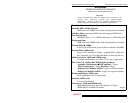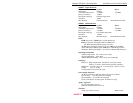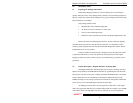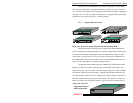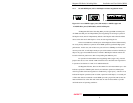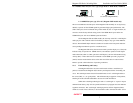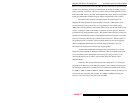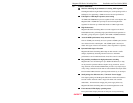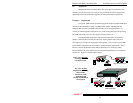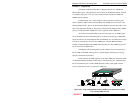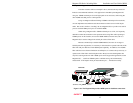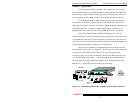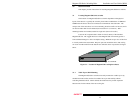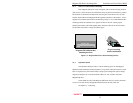
Magnum 500-Series Switching Hubs Installation and User Guide (08/98)
GARRETT
8
there is no way to filter frames with a bad CRC (the entire frame must be present in order
for CRC to be calculated), the result of indiscriminate cut-through forwarding is greater
traffic congestion, especially at peak activity. Since collisions and bad packets are more
likely when traffic is heavy, the result of the Magnum 500’s Store and Forward operation
is that more bandwidth is available for good packets when the traffic load is greatest.
To minimize the possibility of dropping frames on congested ports, the
Magnum 500-Series dynamically allocates buffer space from a 1 MB memory pool,
ensuring that heavily used ports receive very large buffer space for packet storage.
(Many other switching hubs have their packet buffer storage space divided evenly across
all ports, resulting in a small, fixed number of packets to be stored per port. When the
port buffer fills up, dropped packets result.) This dynamic buffer allocation provides the
capability for the maximum resources of the Magnum 500 unit to be applied to all traffic
loads, even when the traffic activity is unbalanced across the ports. Since the traffic on
an operating network is constantly varying in packet density per port and in aggregate
density, the Magnum 500 Switches are constantly adapting internally to provide
maximum network performance with the least dropped packets.
Another feature implemented in Magnum 500-series switches is a collision-
based flow-control mechanism. When the switch detects that its free buffer queue space
is low, the switch prevents more frames from entering by forcing a collision on all
receiving half-duplex ports in order to stop incoming traffic. See Section 4.6 for
additional details.
The latency (the time the frame spends in the switch before it is sent along or
forwarded to its destination) of the 500-Series switches varies with the port-speed types,
and the length of the frame is a variable here as it is with all store-and-forward switches.
For 10Mb-to-10Mb or 10Mb-to-100Mb or 100Mb-to-10Mb forwarding, the latency is 15
microseconds plus the packet time at 10Mb. For 100Mb-to-100Mb forwarding, the
latency is 5 microseconds plus the packet time at 100Mb.



